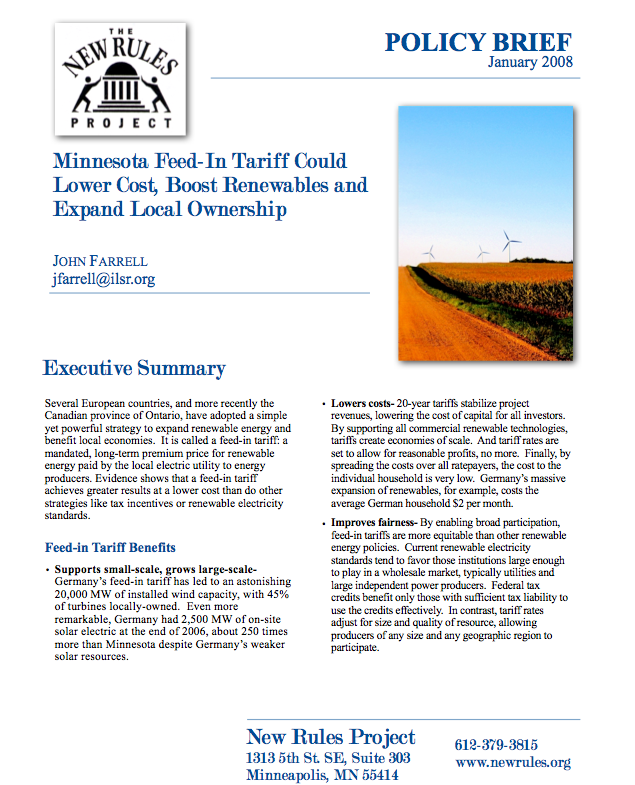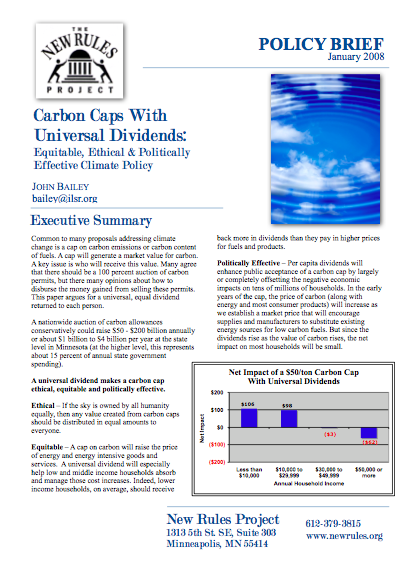This January 2008 policy brief by John Farrell highlights how several European countries, and more recently the Canadian province of Ontario, have adopted a simple yet powerful strategy to expand renewable energy and benefit local economies. It is called a feed-in tariff: a mandated, long-term premium price for renewable energy paid by the local electric utility to energy producers. Evidence shows that a feed-in tariff achieves greater results at a lower cost than do other strategies like tax incentives or renewable electricity standards.
Several European countries, and more recently the Canadian province of Ontario, have adopted a simple yet powerful strategy to expand renewable energy and benefit local economies. It is called a feed-in tariff: a mandated, long-term premium price for renewable energy paid by the local electric utility to energy producers. Evidence shows that a feed-in tariff achieves greater results at a lower cost than do other strategies like tax incentives or renewable electricity standards.
Supports small-scale, grows large-scale – Germany’s feed-in tariff has led to an astonishing 20,000 MW of installed wind capacity, with 45% of turbines locally-owned. Even more remarkable, Germany had 2,500 MW of on-site solar electric at the end of 2006, about 250 times more than Minnesota despite Germany’s weaker solar resources.
Lowers costs – 20-year tariffs stabilize project revenues, lowering the cost of capital for all investors. By supporting all commercial renewable technologies, tariffs create economies of scale. And tariff rates are set to allow for reasonable profits, no more. Finally, by spreading the costs over all ratepayers, the cost to the individual household is very low. Germany’s massive expansion of renewables, for example, costs the average German household $2 per month.
Improves fairness – By enabling broad participation, feed-in tariffs are more equitable than other renewable energy policies. Current renewable electricity standards tend to favor those institutions large enough to play in a wholesale market, typically utilities and large independent power producers. Federal tax credits benefit only those with sufficient tax liability to use the credits effectively. In contrast, tariff rates adjust for size and quality of resource, allowing producers of any size and any geographic region to participate.
https://ilsr.org/wp-content/uploads/files/images/feed-in-tariffs.pdf




